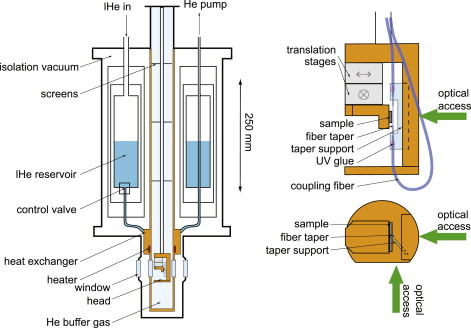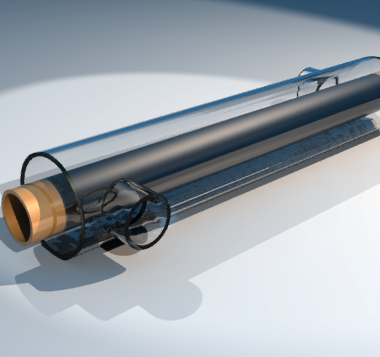Cryogenic Cooling Components
Introduction
Cryogenic cooling components is fundamental for various industries that require precise control of temperature at extremely low levels, far below the freezing point. This technology is essential in applications where standard cooling methods cannot function effectively, such as in superconducting materials, quantum computing, medical imaging (MRI), space exploration, and energy storage. Cryogenic cooling components enable the efficient storage, transport, and utilization of liquefied gases, like liquid nitrogen, helium, and hydrogen, which are maintained at cryogenic temperatures to serve critical roles in these applications. The development of cryogenic systems has made remarkable strides over the years, incorporating cutting-edge insulation materials, advanced heat exchangers, and specialized cryocoolers. These innovations allow industries to maintain ultra-low temperatures with greater efficiency and precision. In addition to performance improvements, the increased focus on sustainability has driven the need for more energy-efficient cryogenic systems, as well as alternatives to traditional cooling methods. These components not only enhance system performance but also minimize thermal losses, reduce environmental impact, and ensure more reliable operation in extreme environments. Cryogenic cooling is therefore an essential component of future technologies aimed at transforming medical, industrial, and scientific processes.
Key Components of Cryogenic Cooling Systems
- Cryogenic Heat Exchangers
These devices enable efficient heat transfer between fluids at cryogenic temperatures. They are designed to handle extreme temperature differentials while preventing thermal stress. Heat exchangers are widely used in liquefied natural gas (LNG) processing, industrial gas separation, and superconducting systems. - Cryocoolers
Cryocoolers are refrigeration devices that maintain low temperatures for specific applications, such as MRI machines, space telescopes, and superconducting electronics. They use methods like Gifford-McMahon, Stirling cycle, and pulse tube refrigeration to achieve cryogenic cooling with high efficiency. - Vacuum Insulated Piping
This specialized piping system is designed to transport cryogenic fluids such as liquid nitrogen, oxygen, and argon without significant heat loss. The vacuum insulation prevents ambient heat from entering the system, reducing evaporation losses and ensuring the safe handling of cryogenic liquids in medical, industrial, and aerospace applications. - Cryogenic Pumps
These pumps are engineered to handle ultra-cold fluids with minimal heat absorption. They are used in LNG plants, industrial gas processing, and hydrogen fuel applications. Cryogenic pumps ensure efficient fluid transfer by maintaining insulation and preventing phase changes during movement. - Cryogenic Storage Tanks
Designed for the safe storage of liquefied gases, these tanks feature multi-layer insulation and vacuum-sealed technology to minimize heat ingress. They are used in hospitals, research labs, and industrial gas production facilities to store gases such as nitrogen, oxygen, helium, and hydrogen. - Cryogenic Valves
These specialized valves control and regulate the flow of cryogenic fluids while preventing leaks and pressure build-up. They are designed to withstand extreme temperatures and are commonly used in LNG transport, aerospace cryogenic fuel systems, and industrial gas distribution.
Innovations in Cryogenic Cooling
- Magnetic Refrigeration
This emerging technology utilizes the magnetocaloric effect to achieve cooling without the use of traditional refrigerants. It offers a more energy-efficient and environmentally friendly alternative for cryogenic cooling, particularly in space research and medical imaging. - Miniaturized Cryocoolers
Advances in engineering have led to the development of compact cryocoolers for applications such as semiconductor cooling, infrared sensors, and portable medical devices. These small-scale systems provide efficient cryogenic cooling in limited spaces while maintaining high performance. - Advanced Superinsulation Materials
The use of aerogels, multi-layer insulation (MLI), and nanomaterials has significantly reduced thermal losses in cryogenic systems. These materials improve energy efficiency and reduce operational costs, making cryogenic storage and transportation more effective. - Hybrid Cryogenic Systems
The combination of cryogenic cooling with traditional refrigeration techniques enhances efficiency and reliability. Hybrid systems are being explored for applications such as hydrogen fuel storage, deep-space missions, and data center cooling.
Future Trends in Cryogenic Cooling
- Cryogenics in Quantum Computing
Quantum processors require temperatures near absolute zero to function efficiently. Cryogenic cooling solutions are becoming more advanced to meet the demands of quantum computing research, superconducting circuits, and ultra-sensitive sensors. - Space Exploration Advancements
The need for efficient cryogenic fuel storage and thermal management systems is growing as space agencies and private companies explore deep-space missions. Innovations in liquid hydrogen and liquid oxygen storage are improving spacecraft efficiency. - Renewable Energy Integration
Cryogenic energy storage (CES) is gaining attention as a method for storing excess energy from renewable sources. By cooling and liquefying air, CES can provide a sustainable, long-duration energy storage solution for future power grids. - Medical Cryogenics
Advances in cryogenic cooling are improving organ preservation, cell therapy, and cryosurgery. New techniques in biological sample storage and regenerative medicine are expanding the use of cryogenics in healthcare.
Advantages of Cryogenic Cooling Components
- Ultra-Low Temperature Efficiency
Cryogenic systems provide consistent and stable cooling, making them ideal for scientific research, industrial gas processing, and medical applications. They allow operations to run at extremely low temperatures with minimal fluctuations. - Energy Savings
Modern cryogenic insulation and advanced cooling technologies reduce energy consumption by preventing unnecessary heat transfer. This leads to lower operational costs and higher system efficiency. - Reliability & Longevity
Cryogenic components are designed to operate under extreme conditions with high durability. Their ability to withstand thermal stress, pressure variations, and corrosive environments ensures long-term performance. - High Precision & Control
Cryogenic cooling systems offer precise temperature regulation, which is essential for applications like MRI machines, superconducting materials, and laboratory experiments. - Eco-Friendly Potential
With advancements in magnetic refrigeration, renewable energy storage, and alternative cooling methods, cryogenic cooling is becoming more sustainable. These technologies help reduce reliance on harmful refrigerants and fossil fuel-based cooling systems.






